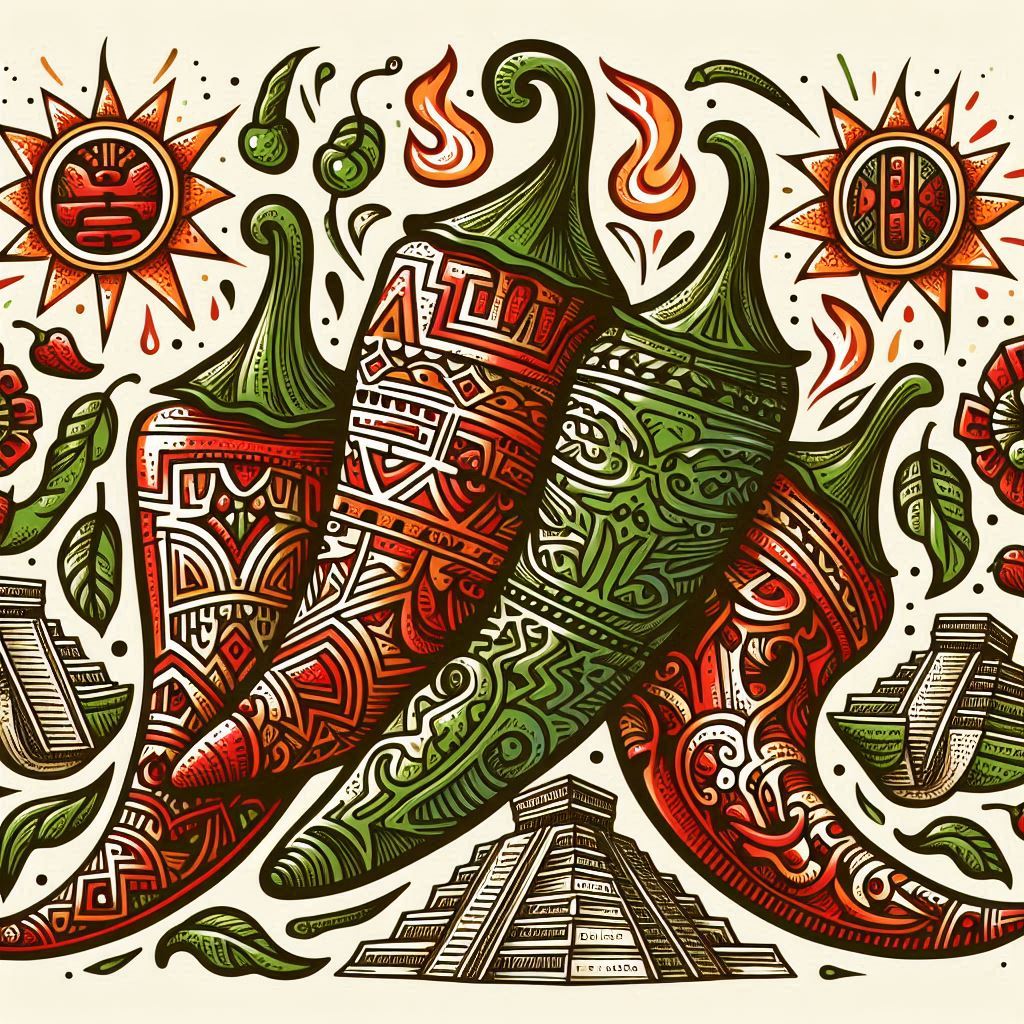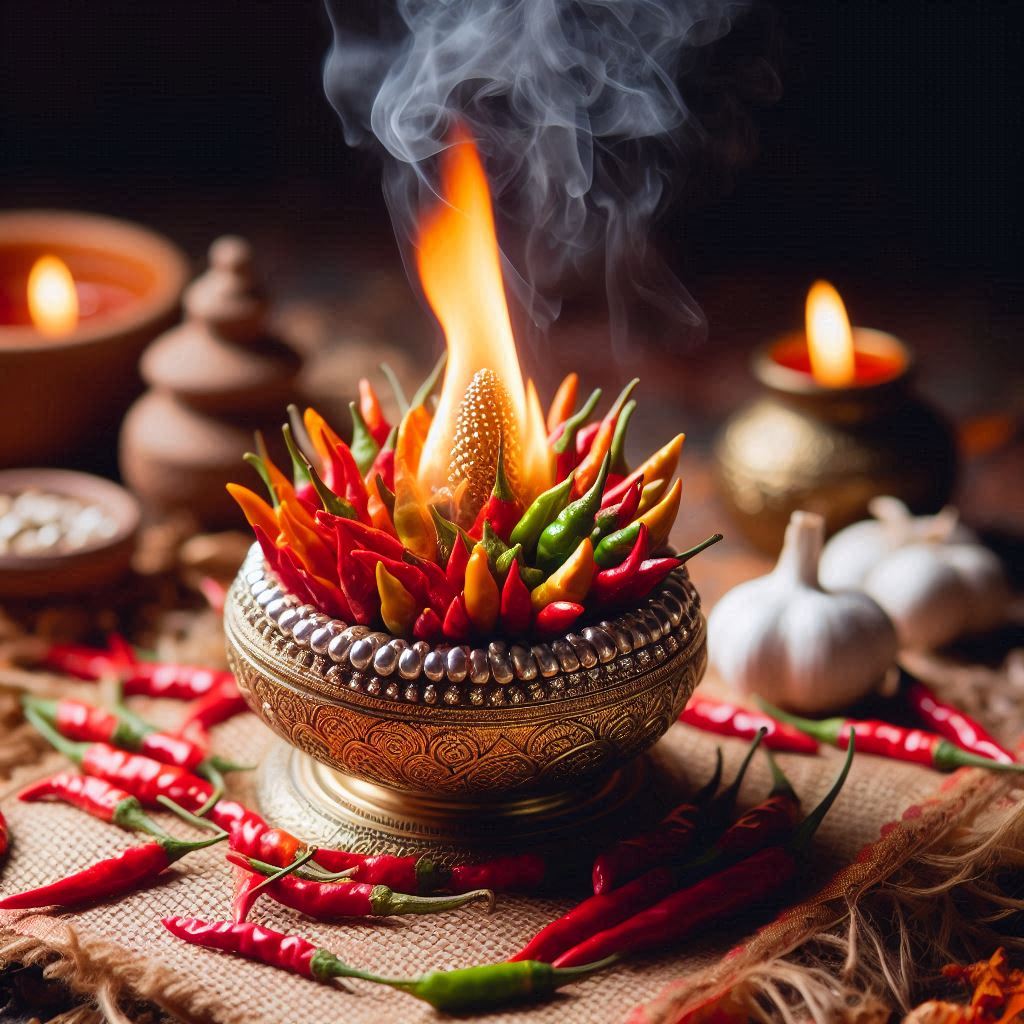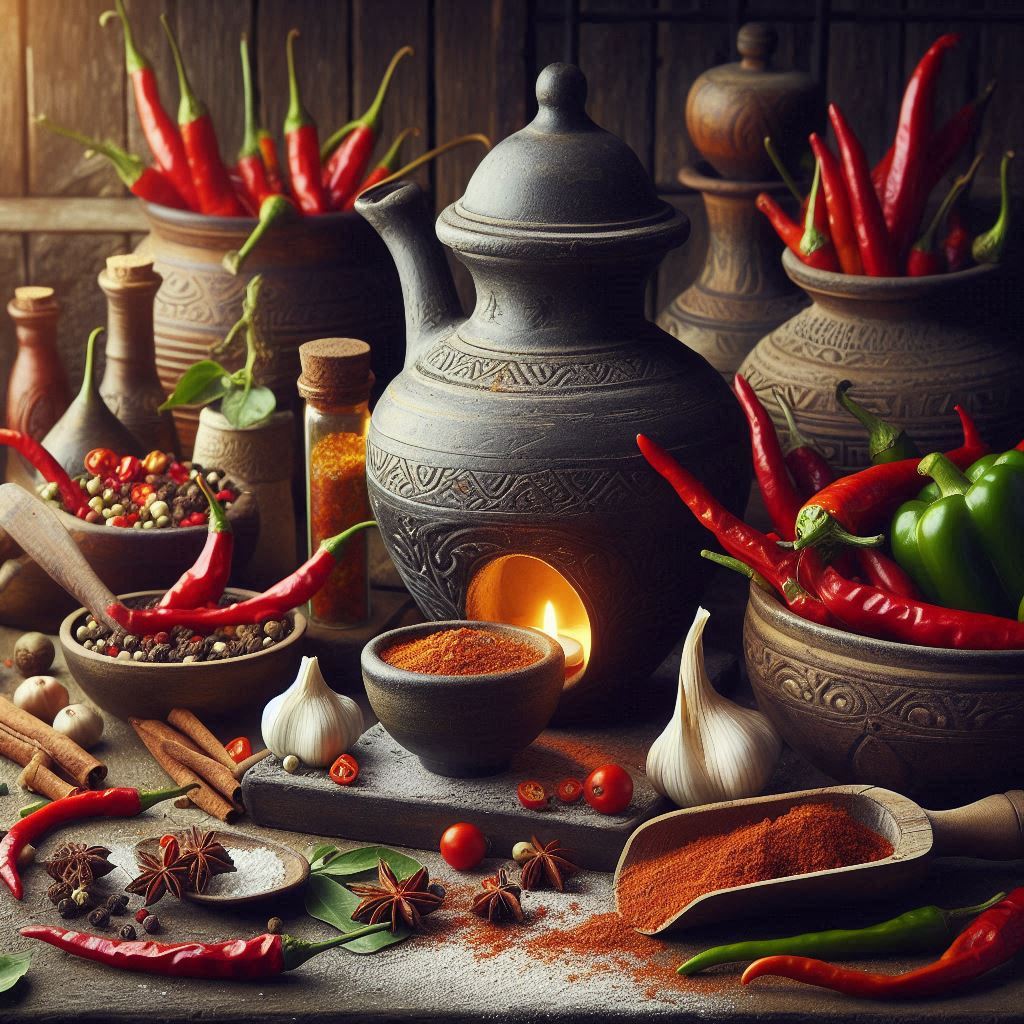
The Fiery Journey:
The Ubiquitous Presence of Chilli Peppers in Global Cuisines
Chilli peppers, with their fiery flavor and vibrant colors, have become an indispensable ingredient in cuisines across the globe.
From the bustling markets of Mexico to the street food stalls of Thailand and the kitchen tables of India, chilli peppers have left an indelible mark on culinary traditions worldwide.
These humble fruits, belonging to the genus Capsicum, have a long and storied history that spans continents and centuries. Originating in Mesoamerica thousands of years ago, chilli peppers were cultivated by ancient civilizations such as the Aztecs and Mayans for both culinary and medicinal purposes.
With the arrival of European explorers in the Americas in the 15th century, chilli peppers embarked on a journey that would eventually take them to every corner of the globe. The Columbian Exchange facilitated the spread of chilli peppers to Europe, Africa, and Asia, forever altering the culinary landscapes of these regions.
Chilli peppers were initially met with skepticism and curiosity in Europe, but they soon found their way into local cuisines, adding depth and complexity to dishes ranging from Spanish paella to Hungarian goulash. Similarly, in Asia, chilli peppers became integral to the spice blends of Indian curries, the stir-fries of China, and the sambals of Indonesia.
As trade routes expanded and colonial empires rose, chilli peppers continued to spread, adapting to new climates and culinary traditions along the way. They became a symbol of cultural exchange and fusion, blending seamlessly with local ingredients to create new and innovative dishes.
Today, chilli peppers are celebrated in festivals and competitions around the world, showcasing the diversity of flavors and heat levels that they offer. Whether it’s the smoky heat of chipotle peppers in Mexican cuisine, the fiery kick of Korean gochujang, or the numbing spice of Sichuan peppercorns in Chinese hotpot, chilli peppers continue to captivate palates and inspire culinary creativity on a global scale.
In conclusion, the ubiquitous presence of chilli peppers in cuisines worldwide is a testament to their enduring appeal and versatility. From ancient rituals to modern gastronomy, chilli peppers have transcended cultural boundaries to become a beloved staple in kitchens everywhere, enriching dishes with their distinctive flavor and heat.
The rich and complex history of chilli peppers unveils their profound influence on global cultures and cuisines, serving as a testament to their journey from ancient Mesoamerican civilizations to becoming an indispensable ingredient in culinary traditions around the world.
Origins of Chilli Peppers



The domestication and cultivation of wild chilli peppers in Mesoamerica represent a pivotal moment in the history of agriculture and culinary development. Dating back to around 7500 BCE, this process not only transformed a humble wild plant into a widely cultivated crop but also laid the foundation for the cultural significance of chilli peppers in Mesoamerican societies.
1. Wild Chilli Peppers in Mesoamerica:
- Wild chilli peppers (Capsicum annuum and Capsicum chinense) were native to the regions of present-day Mexico, Central America, and parts of South America.
- Archaeological evidence, including residue analysis and botanical remains, suggests that wild chilli peppers were consumed by indigenous populations as early as 7500 BCE.
- These early chilli peppers likely had smaller fruits with varying degrees of heat, ranging from mild to extremely spicy, depending on the species and variety.
2. Domestication Process:
- Over thousands of years, indigenous peoples in Mesoamerica selectively bred wild chilli peppers for desirable traits such as larger fruit size, consistent heat levels, and improved flavor.
- Through a process of trial and error, early farmers developed cultivation techniques to propagate chilli peppers, including seed selection, cultivation in fields or gardens, and potentially even early forms of irrigation.
- Domestication likely occurred alongside the cultivation of other staple crops like maize (corn), beans, and squash, forming the basis of Mesoamerican agriculture.
3. Cultural Significance:
- Chilli peppers held deep cultural significance for ancient Mesoamerican civilizations such as the Aztecs, Mayans, and Olmecs.
- They were not only used as a food source but also played important roles in religious rituals, medicinal practices, and social customs.
- Chilli peppers were often associated with deities and believed to have supernatural powers, serving as offerings in ceremonies and as protective charms against evil spirits.
4. Culinary Utilization:
- In addition to their cultural and ritualistic roles, chilli peppers became integral to Mesoamerican cuisine, adding flavor, spice, and color to a wide variety of dishes.
- Early Mesoamerican cuisines featured chilli peppers in sauces, stews, tamales, and even beverages like chocolate-based drinks flavored with chilli.
- The culinary versatility of chilli peppers allowed Mesoamerican societies to create diverse and flavorful meals, showcasing their ingenuity and culinary expertise.
5. Legacy and Impact:
- The domestication of chilli peppers in Mesoamerica had far-reaching consequences, shaping not only the diets and cuisines of indigenous peoples but also influencing global foodways.
- Following the Columbian Exchange, chilli peppers were introduced to Europe, Asia, and Africa, where they became integral components of local cuisines, sparking culinary revolutions and cultural exchange.
In conclusion, the domestication and cultivation of wild chilli peppers in Mesoamerica represent a remarkable feat of agricultural innovation and cultural adaptation. The profound impact of chilli peppers on global cuisines underscores their enduring legacy as one of the most influential crops in human history.
The significance of chillies in ancient indigenous cultures
The significance of chillies in ancient indigenous cultures like the Aztecs and Mayans extended far beyond their culinary uses; they held profound ritualistic and cultural importance as well.
1. Culinary Significance:

- In ancient Mesoamerican cuisines, including those of the Aztecs and Mayans, chillies were foundational ingredients, adding flavor, spice, and color to a wide range of dishes.
- Chilli peppers were incorporated into traditional foods such as tamales, sauces, soups, and stews, enhancing their taste and aroma.
- The diverse range of chilli pepper varieties available in Mesoamerica allowed for culinary experimentation, enabling cooks to create dishes with varying levels of heat and flavor profiles.
2. Ritualistic Importance:

- Chilli peppers held significant symbolic and ritualistic meanings in the religious practices of ancient Mesoamerican cultures.
- In Aztec and Mayan cosmology, chilli peppers were often associated with deities and supernatural beings, believed to possess divine powers.
- Chilli peppers were used as offerings in religious ceremonies and rituals, symbolizing fertility, abundance, and vitality.
- The consumption of chilli peppers was sometimes part of purification rituals or rites of passage, signifying endurance and strength.
3. Symbolism and Cultural Identity:

- Chillies were deeply ingrained in the cultural identity of ancient Mesoamerican societies, representing resilience, vitality, and the connection between humans and the natural world.
- They featured prominently in artwork, myths, and legends, serving as motifs in pottery, murals, and sculptures.
4. Healing and Medicinal Uses:

- Beyond their culinary and ritualistic roles, chilli peppers were also valued for their medicinal properties in ancient Mesoamerican cultures.
- Capsaicin, the compound responsible for the heat in chillies, was believed to have analgesic and anti-inflammatory effects, used to alleviate pain and treat ailments.
- Chilli peppers were incorporated into traditional remedies for various health conditions, including digestive disorders, respiratory ailments, and even as an aphrodisiac.
- In summary, chilli peppers held multifaceted significance in ancient indigenous cultures like the Aztecs and Mayans, serving as essential ingredients in cuisine, symbols of spiritual and cultural identity, and agents of healing and purification. Their pervasive presence in Mesoamerican societies underscores the profound relationship between humans and the natural world, as well as the rich tapestry of traditions and beliefs that shaped ancient civilizations.
